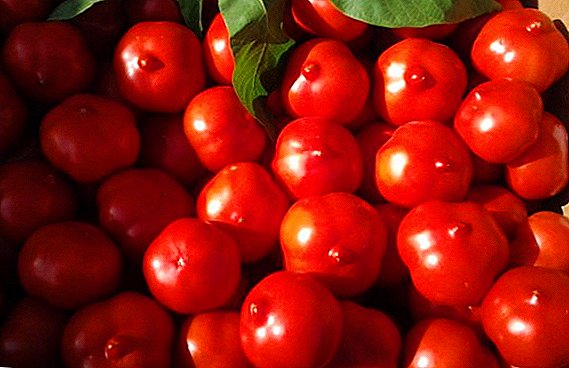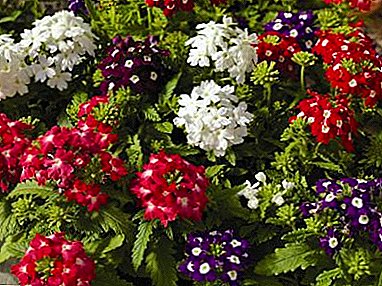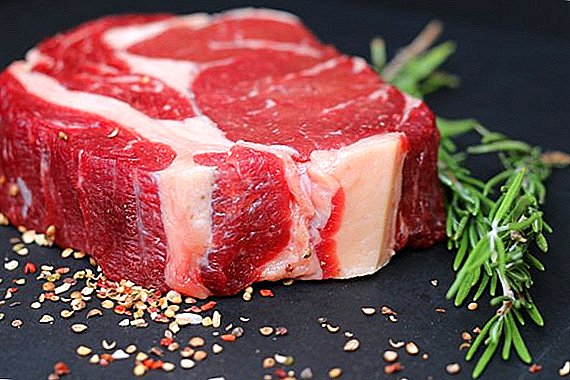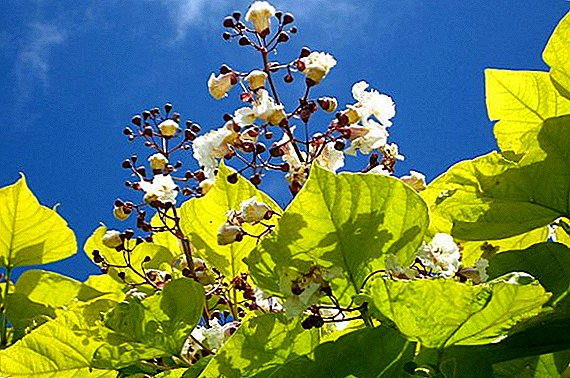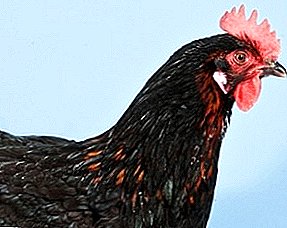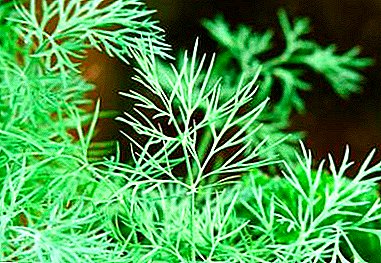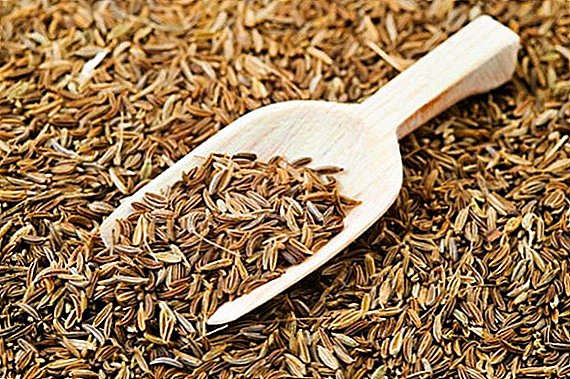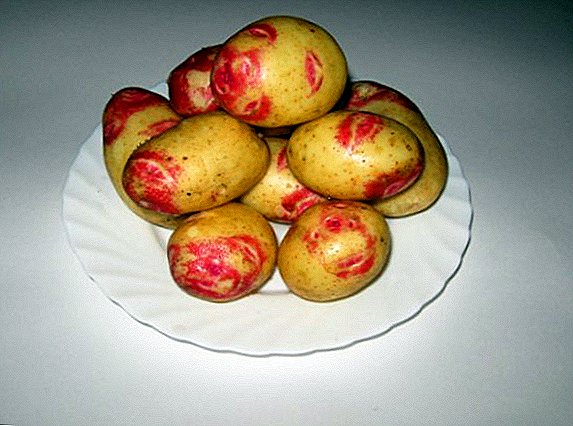
Welsey is a well-known and fairly common apple variety. It was withdrawn in the middle of the XIX century and firmly took its place in the CIS and beyond.
On the basis of the Welsey variety, about 40 varieties of apple trees were deserving of attention. As a parent variety, Welsey was used because of its unique properties and resistance to disease. What is an apple tree of this variety?
What kind is it?
Sort Welsey can be attributed to varieties of late autumn or early winter ripening. Gather apples for storage in September, but after 2-3 months the taste of them becomes even more saturated. The variety is zoned in the Central Black Earth, Lower Volga, North-West and North-Caucasus regions.
Apples can be stored until the end of February and early March. With the collection of fruits should not be delayed, since they are prone to premature shedding.
Apples of this variety are perfect for cooking jam and jam, for drying and urinating, as well as for long storage.
Store them in cellars or cellars., at a sufficiently high humidity and an average temperature of -1 to +1 C. The tab for storage is standard: in cardboard boxes or plastic boxes the fruits are laid in layers, shifting them with paper or well dried sawdust.
Apple trees Welsey - samobbleplodnyetherefore, pollinating varieties must be planted nearby. In this case, it is Mekintosh, Antonovka ordinary, Borovinka and Delishes.
Variety Welsey popular with gardeners, not only because of its remarkable properties, but also because of the appearance of the tree and fruit.
Description varieties Welsey
 In the photo you can see how this wonderful apple tree and its fruits look, and then read the full description below.
In the photo you can see how this wonderful apple tree and its fruits look, and then read the full description below.
The tree is not very tall, rather medium.
The crown is wide, dense, rounded. The main branches are located at a rather acute angle, which can lead to their breaking off under the weight of the crop. Young trees can use props.
The shoots are medium brownish brown. Buds are large, wide. The leaves are small, shiny, rarely located, wavy edges. The flowers are bright, medium size, pinkish.
Fruits are medium-sized, weighing about 100-130 grams. The form is somewhat flattened, rounded. The skin is thin, greenish-yellow, with a bright crimson blush, occupying almost the entire area of the fruit. The flesh is white with a greenish tinge. The taste of apples are sweet, with a pleasant tartness, crispy and very juicy.
Wesley variety apples are distinguished not only by taste and beautiful appearance, but also by good transportability and keeping quality. The disadvantages of the variety include the dependence of the taste of apples on the growing conditions.. If the season was rainy and cold - the taste of the fruit deteriorates, becomes "grassy".
A photo


Breeding history
Welsey is home to the state of Minnesota. This variety was obtained in 1860. with the use of seeds of the Siberian apple.
It began to grow in Russia from the end of the XIX century. After a long study, regions suitable for growing the Wesley variety were identified.
Natural growth region
This variety was bred in America, but most widely received in the European part of Russia, Belarus and the Baltic States. Due to its average winter hardiness it can be grown everywhere. Maintains frosts to-20-25С, at lower temperature needs shelter.
With a favorable climate can produce good yields.
Yield

Fruiting apple begins early, 3-4 year after planting.
The harvest from one tree reaches 200-250 kg.
But Welsey bears fruit after a year. The apples ripen not evenly, therefore eat crop produce in two rounds. The first - in early September, the second - in early October
To get a good harvest, you need to plant the apple tree properly and provide good care.
Planting and care
The rules for planting and caring for a Welsey variety are not much different from the rules applicable to other varieties.
It is better to choose a landing site with a depth of groundwater of more than 4 meters. It is possible to plant both in the spring and in the autumn, in the holes prepared in advance.
Welsey loves good lightbut does not tolerate exposure to scorching sunlight. At the landing site should not be strong cross-winds.
The soil must be well air-and permeable, loamy or loamy-sabulous. Pits for landing of the standard size: width is 50-80 cm, depth is 1-1,5 m.
The top sod layer mixed with superphosphate, wood ash and compost is poured into the pit. Carefully planted tree with a peg for support. Lightweight soft cloth to not damage the bark, the seedling is tied to a peg on the leeward side. After planting - abundant watering.
A prerequisite in the first year of the life of an apple is watering, loosening and fertilizer. When the summer is dry, watering is carried out once a week, preferably in the evening. Watering a young apple tree is better from above, washing the branches. Loosening is carried out after watering or rain, very carefully, so as not to damage the roots.

Fertilizers are used standard for all varieties of apples: in the summer - nitrogen and phosphorus-potassium, and in the fall - organic.
Top dressing is carried out several times a year.. It is very good to use a non-concentrated urea solution or a mixture of slurry-based wood ash for root feeding and spraying.
In the first year of life, an apple tree is used for pruning. In the process of aging the tree, once every 2-3 years, rejuvenating pruning is done.
For the winter, the apple tree must be warmed with fir branches or sacking and it is good to mulch the tree trunk. But despite all the efforts, there remains the danger of the tree and disease being destroyed by pests.
Diseases and pests
The apple tree variety, Welsey, is highly resistant to scab, but may be affected by other common diseases, such as powdery mildew and cytosporosis. The control methods are universal for all varieties: pruning and burning of affected branches and processing with special preparations.
The pests most commonly found in the Wesley variety are the hawthorn and the pinwort.. Raking the fallen leaves in the fall, weeding and loosening the ground around the trunk and spraying insecticides will help fight them.
 Caring for an Wesley apple tree is easy.
Caring for an Wesley apple tree is easy.
This variety has long been known and popular both in amateur gardens and in industrial fruit growing.
Its useful qualities are time tested and noteworthy gardeners.
And in this video you can learn about the positive qualities of the Welsey variety and see with your own eyes these apple trees.


